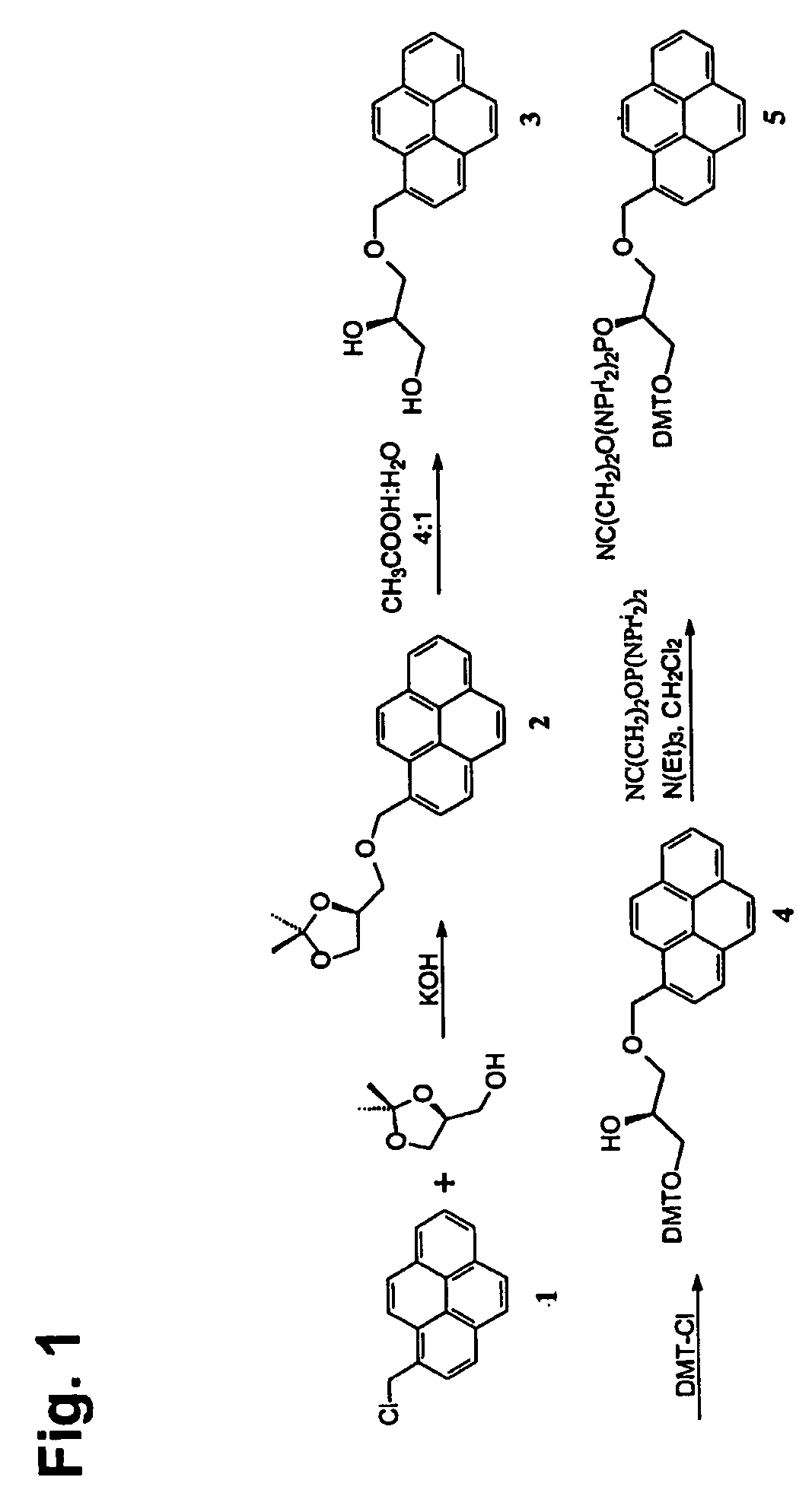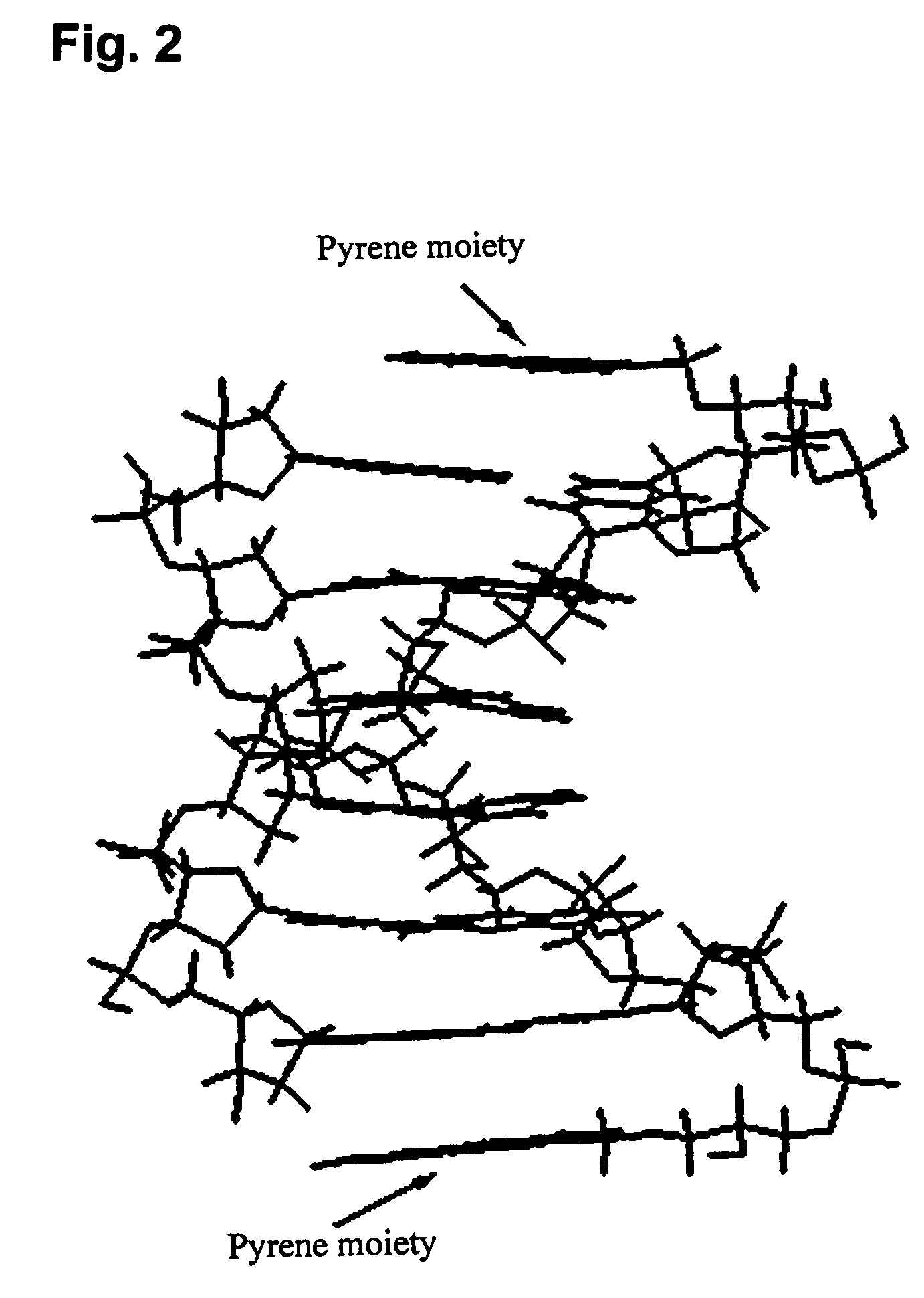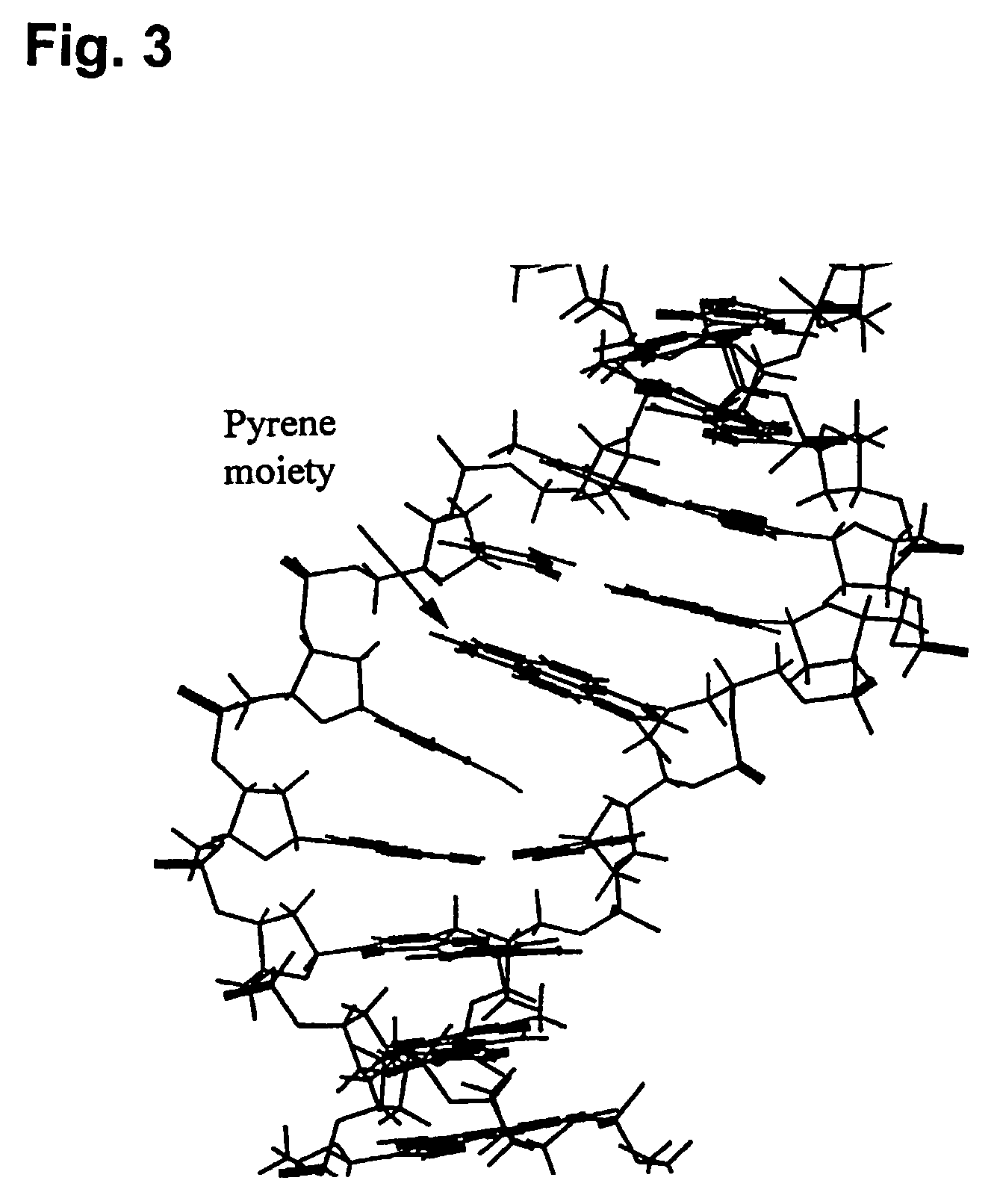Pseudonucleotide comprising an intercalator
a technology of intercalator and pseudonucleotide, which is applied in the field of synthetic nucleotide like molecules, can solve the problems of general inability to differentiate between ssrna and ssdna chemically modified oligonucleotides, and affect the binding of another complementary nucleic acid, so as to increase the fluorescence of monomers.
- Summary
- Abstract
- Description
- Claims
- Application Information
AI Technical Summary
Benefits of technology
Problems solved by technology
Method used
Image
Examples
example 1
Preparation of an Intercalator Pseudonucleotide
[0811] 1-Pyrenemethanol is commercially available, but it is also easily prepared from pyrene by Vilsmeier-Haack formylation followed by reduction with sodium borohydride and subsequent conversion of the alcohol with thionyl chloride affords 1-(chloromethyl)pyrene in 98% yield.
[0812] The acyclic amidite 5 (FIG. 1) was prepared from (S)-(+)-2,2-dimethyl-1,3-dioxalane-4-methanol and 1-(chloromethyl)pyrene in 52% overall yield. The synthesis of 5 (FIG. 1) is accomplished using KOH for the alkylation reaction, and using 80% aqueous acetic acid to give the diol 3 (FIG. 1), which is protected with dimethoxytritylchloride (DMT-Cl) and finally reaction with 2-cyanoethyl N,N,N′,N′-tetraisopropylphosphorodiamidite affords target compound 5 (FIG. 1) in 72% yield. The yield in the latter reaction step was decreased from 72% to 14% when 2-cyanoethyl N,N-diisopropylchlorophosphor amidite was used as the phosphitylating reagent. The synthesis of th...
example 2
Alternative synthesis procedure for 3-(1-Pyrenylmethoxy)-propane-1,2-diol
[0820]
[0821] 1-Pyrenylmethanol (232 mg; 1.0 mmol) is dissolved in hot toluene (2 mL over Na). CsF (7 mg; 0,046 mmol) is added and stirred for approx. 1 h at room temperature when 3-chloro-1,2-propandiol (170 mg; 1.53 mmol) is added. The mixture is stirred at 80° C. for 2 h, cooled off to room temperature and the precipitated product is separated from the mixture by filtration. Washed with cold toluene (2×1 mL). Yield 220 mg (72%).
example 3
Synthesis of the 2-O phosphoramidite of 1-O-4,4′-dimetoxytrityl-4-O-(9-antracenylmethyl)-1,2,4-butanetriol
[0822]
9-anthracenemethylchlorid (II)
[0823] 9-anthracenemethanol (0.81 g; 3.89 mmol; I) was dissolved in dry pyridine (467 μL; 5.83 mmol) and dry CH2Cl2. Under stirring and at 0° C. SOCl2 (423 μL; 5.83 mmol) was added dropwise, and the mixture was stirred for 24 h during which the temperature is allowed to rise to r.t. within 2 h. The reaction is poured onto stirring H2O (60 mL) and was added additional CH2Cl2 (40 mL). The organic phase was washed with a 5% NaHCO3 (100 mL) solution, brine (100 mL) and water (100 mL) respectively. Dried over Na2SO4 and concentrated in vacuo. Yield 665 mg (75%).
1,2-□□-isopropylidene-4-(9-anthracenylmethyl)-1,2,4-butanetriol (III)
[0824] 9-anthracenemethylchlorid (628 mg; 277 mmol) was dissolved in dry toluene (25 mL over Na) and 2-[(S)-2′,2′-dimethyl-1′,3′-dioxalan-4′-yl]-ethanol (506 mg; 3.5 mmol) and 3 small spoons of KOH was added. The mixtur...
PUM
| Property | Measurement | Unit |
|---|---|---|
| Melting point | aaaaa | aaaaa |
| Melting point | aaaaa | aaaaa |
| Melting point | aaaaa | aaaaa |
Abstract
Description
Claims
Application Information
 Login to View More
Login to View More - R&D
- Intellectual Property
- Life Sciences
- Materials
- Tech Scout
- Unparalleled Data Quality
- Higher Quality Content
- 60% Fewer Hallucinations
Browse by: Latest US Patents, China's latest patents, Technical Efficacy Thesaurus, Application Domain, Technology Topic, Popular Technical Reports.
© 2025 PatSnap. All rights reserved.Legal|Privacy policy|Modern Slavery Act Transparency Statement|Sitemap|About US| Contact US: help@patsnap.com



